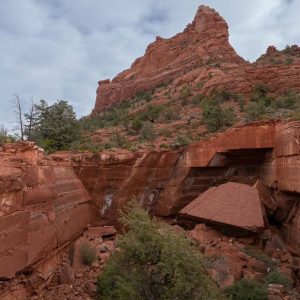![]()
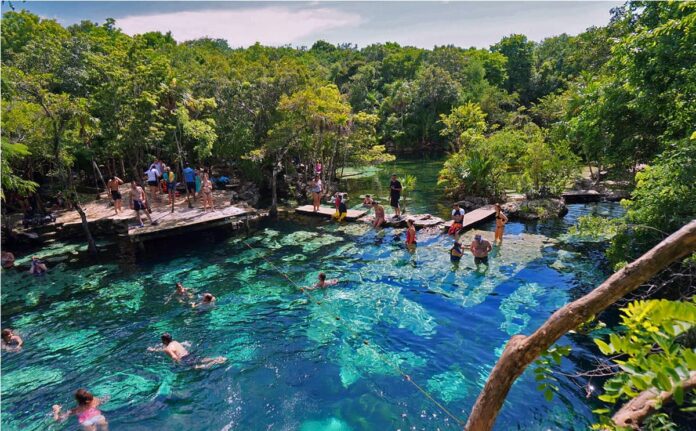

Mexico’s Yucatan Peninsula is dotted with thousands of cenotes. Indeed, they are arguably one of the area’s defining characteristics. Some say the geological feature which is responsible for them is another such characteristic.
Contents
Cenotes Are Mexico’s Hidden Gems
What Is A Cenote?

But wait! What exactly is a cenote? A cenote is a natural sinkhole or pit that was created by the complete collapse of limestone bedrock that causes the exposure of groundwater. The ancient Mayans once revered them as sacred well. Today, cenotes are magnets for adventurers, explorers, and tourists alike.
2. The Yucatan, Limestone and Cenotes


The Yucatan Peninsula’s bedrock is mostly soluble limestone. The limestone eventually dissolves once exposed to seeping water for a long time. In the resulting karstic terrain, the permeable bedrock doesn’t permit water to collect above ground as lakes or rivers.
Alternatively, rainwater filters underground through the porous rock and gathers subsurface where the erosion process continues. Sometimes the bedrock weakens and collapses to expose a cave or a cenote. Mind you, there are different kinds of cenotes too.
Some cenotes are shallow and wide, while others are deep shafts filled with water with totally vertical walls, while others are shallow but wide. Still, other cenotes are partially open with some of the water out of sight in a hidden cavern. There are also cavernous cenotes that are only accessible via tunnels or openings in the ceiling.
They are even more complicated underground. Cenotes allow explorers to access prodigious networks of relatively unexplored systems of caves. Along the Caribbean coast they broaden horizontally, while in northwest Yucatan, they’re usually on a vertical plane.

If you’re in Tulum, visit the Grand Cenote. From there you can access the well-known Sistema Sac Actun. It is the world’s second-largest cave system stretching out 335 kilometers. You can find two of the five officially “longest cave systems” in the state of Quintana Roo.
Modern-day researchers have utilized technology to prove a connection between cenotes and the fate of the dinosaurs. Aerial mapping indicated there is a circular to the jungle cenotes. This ring actually marks the rim of a crater caused by a massive meteorite. It dates back 66 million years, somewhere between the Cretaceous and Paleogene Ages.
3. The Historical Significance
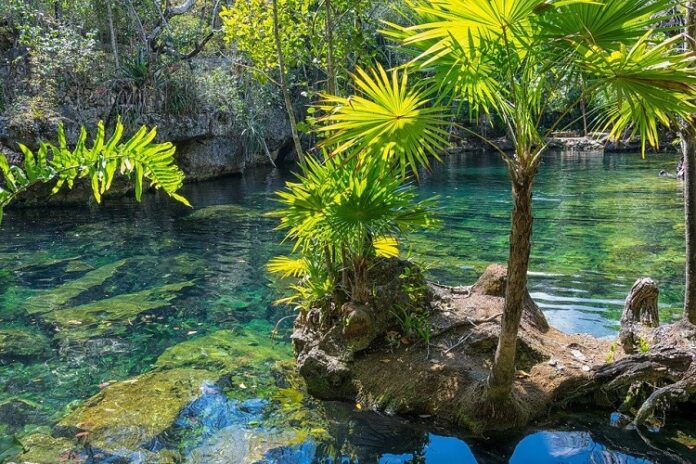

The word “cenote” has its roots in the ancient Yucatec Mayan word “dzonot” which means “well” in English. Before the creation of today’s modern technology, the people who lived there knew the significance of these numerous freshwater sinkholes. Indeed, The ancient Mayans were reported to be one of the Mesoamerican continent’s “most advanced indigenous civilizations.”
They relocated to the Yucatan sometime between 500 BCE and 250 CE. The Yucatan was generally devoid of lakes and rivers. Thus, cenotes were their source of fresh water.
The Mayans built a sophisticated society around cenotes as the sheer number of them were able to sustain sizable settlements. Between 300 and 900 CE, the largest cities they built, like Uxmal and Chichen Itza, were founded close to several cenotes. Mayapan, another example, was located roughly 100 kilometers west of the city of Chichen Itza. Its city walls contained over 40 cenotes that provided fresh water for as many as 17,000 residents.

Not only were cenotes vital for survival but they were also a significant part of the civilization’s religious belief system. The Mayans thought cenotes were sacred and were also an actual gateway to the underworld or Xibalba. Chaacc, the god of rain, supposedly lived at the bottom of the wells.
Mayans also held ceremonies and performed rituals at sacred cenotes praying for good groups and rainfall. The most well-known one is aptly named the Sacred Cenote located close to Chichen Itza, in the northwest region of the peninsula. Modern-day archaeologists have discovered pottery, and gold and jade artifacts.
They even found human remains within its depths with ancient injuries that serve as evidence of human sacrifice. Of course, present-day Mayan culture no longer includes human sacrifices. Nevertheless, many of the ancient Mayan descendants reportedly continue to “pay their respects” to the old mythical residents of the cenotes.
4. Top Three Cenotes And A Bonus
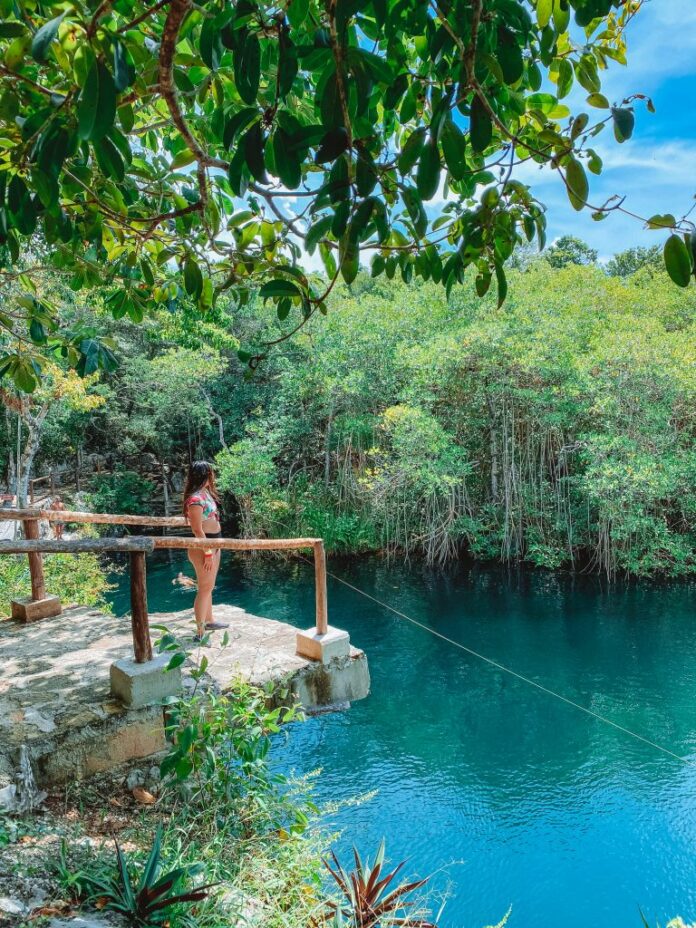

Today cenotes are a very popular destination for adventurers, explorers, and travelers as well. Depending on which cenote you choose to visit, you can go diving, snorkeling, and swimming too. The Cenote known as Ik-Kil is perhaps one of the most amazing open cenotes in Mexico.
It is about three kilometers out of Chichen Itza. It has sheer vertical walls that are usually lined with flowers and various vines and opens to crystal-clear azure water that is a minimum of 40 meters deep. It’s populated by catfish.
Veteran visitors confirm it is an exceptional place for snorkeling and swimming. There is an admission charge but the site features several different amenities. They include cabins, a restaurant, and restrooms.
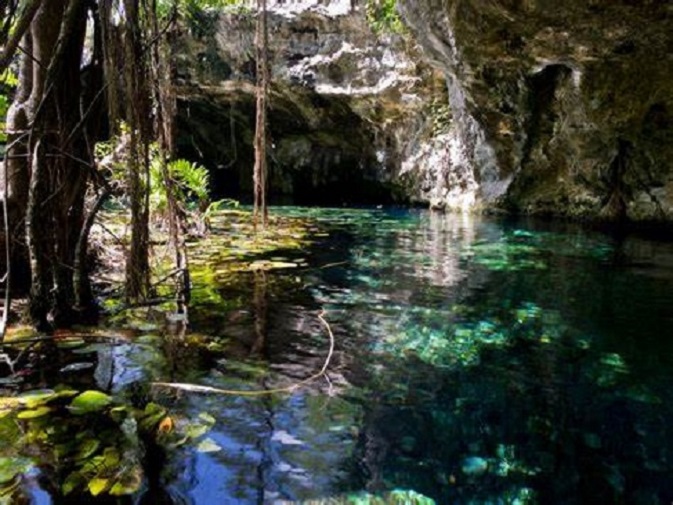
Located near Tulum, the Grand Cenote is a partially open cenote that is recommended for all ages and levels of snorkelers and swimmers. This cenote features docks for sunbathing, partially submerged tunnels that join open-air areas, and interesting underwater limestone formations fit for exploring.
You may see bats hanging from the natural ceiling. It’s okay. They simply make the place more exotic. Most importantly, this cenote offers adventurous types easy access to the second-largest cave system in the world. Thus, it’s a popular place with divers.

You’ll find Cenote Dos Ojos, “Two Eyes” in English, between Tulum and Playa del Carmen. This is another noteworthy place for snorkeling. Witness the sunlight piercing the crystal turquoise water and lighting up the stalagmites rising from the depths. From here you can also access a mysterious flooded underwater system of caves that spans 80+ kilometers. This too is a popular place for diving.
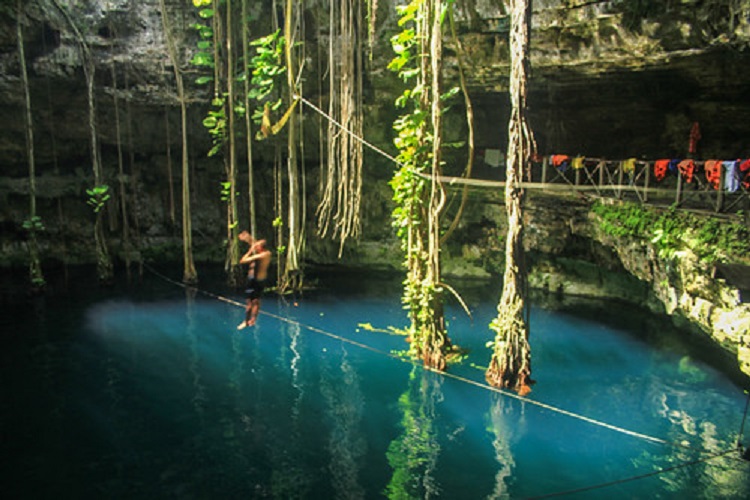
Cenote Oxmal is situated in the area of Valladolid. It’s the least-known, beautiful cenote and includes few amenities but has a very low admission fee. The water here is roughly 67 meters deep. Therefore, veteran visitors recommend that you “head for the surface level” and dive into the water from a height of between 18 and 22 meters.
